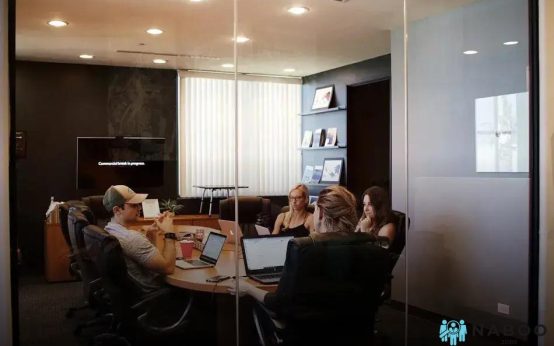Discover effective productivity hacks for remote workers to enhance your work routine. As remote work becomes the norm, mastering time management and creating a dedicated workspace are crucial. Within this guide, you will learn how to utilize technology wisely, adopt a flexible schedule, and maintain a healthy work-life balance. These strategies are designed to boost your productivity and improve your day-to-day workflow, making remote work more manageable and rewarding.
Mastering Time Management
Effective time management is crucial for increasing productivity. By mastering it, you can focus on essential tasks without getting overwhelmed. Start by prioritizing your tasks. Use a to-do list, where you categorize tasks based on urgency and importance. The Eisenhower Box is an excellent tool for this; it helps in distinguishing between what’s urgent and what’s not.
Set clear goals
each day to enhance focus and accountability. Break your work into smaller, manageable tasks. Utilize tools like time-blocking to allocate specific time slots for each task. This approach minimizes distractions and prevents multitasking, which often leads to inefficiency.
Incorporate techniques like the Pomodoro Technique, where you work for 25 minutes followed by a 5-minute break. This method reduces burnout and keeps your mind fresh. Embrace the concept of deep work, dedicating uninterrupted blocks of time to focus on cognitively demanding tasks.
Additionally, learn to say no to non-essential activities that intrude on your focus. Delegation is equally important; entrust others with tasks that do not require your direct attention and expertise.
By adopting these time management strategies, remote workers can effectively increase their productivity, paving the way for more efficient and satisfying workdays.
Creating a Dedicated Workspace
Establishing a dedicated workspace is essential for enhancing productivity while working remotely. It helps create a mental separation between work and personal life, fostering an environment conducive to focus and efficiency. Choose a Quiet Spot: Select a part of your home that experiences minimal noise and distractions. This could be a spare room or even a corner in your bedroom where you can set up a small desk. Invest in Proper Furniture: A comfortable chair and desk tailored to your ergonomic needs will prevent discomfort and allow for prolonged periods of productive work. Ensure Adequate Lighting: Good lighting can reduce eye strain and help maintain alertness throughout the day. Position your desk near a window to take advantage of natural light, or use an adjustable lamp to illuminate your workspace efficiently. Personalize Your Space: Surround yourself with items that inspire and motivate you, such as plants, artwork, or a vision board. Personal touches can make your workspace inviting and increase your willingness to spend time there. Organize for Efficiency: Keep your workspace organized by using storage solutions like shelves or drawers to minimize clutter. An organized workspace can significantly improve concentration and reduce the time spent looking for essential materials. Minimize Digital Disruptions: Keep your technology organized with minimal cables and invest in storage solutions that keep your gadgets easily accessible yet out of the way when not in use. By creating a structured and pleasant environment dedicated to work, you are better positioning yourself to remain productive and engaged throughout the day.
Utilizing Technology Wisely
In the digital age, remote workers have access to a plethora of tools designed to enhance productivity. Choosing the right technology can dramatically improve workflow efficiency. Consider integrating project management platforms like Trello or Asana. These tools allow you to organize tasks, set deadlines, and collaborate seamlessly with team members.
Additionally, embracing communication tools such as Slack or Zoom can help maintain effective communication with colleagues. They allow for instant messaging, video calls, and file sharing, ensuring that team collaboration is not hindered by physical distance.
Leveraging cloud storage solutions like Google Drive or Dropbox is another wise choice. These platforms make it easy to access important documents from anywhere and ensure that your data is backed up safely. This means no more worries about losing valuable information in case of technical issues.
Remote workers can also benefit from time tracking apps such as Toggle or Clockify. These tools help ensure that you are using your time wisely, providing insights into your work habits and helping you identify areas for improvement.
Lastly, consider using automation tools to handle repetitive tasks. Services like IFTTT (If This Then That) or Zapier can connect different applications to perform actions automatically, giving you more time and energy to focus on more significant tasks.
Adopting a Flexible Schedule
One effective strategy for remote workers to maximize their productivity is adopting a flexible schedule. This approach allows you to align your work hours with your natural energy peaks—a time-saving technique that can lead to higher efficiency.
Flexible schedules offer the advantage of customizing work hours to suit individual preferences and responsibilities. Whether you are more productive in the morning or prefer working into the evening, a flexible schedule lets you choose when to tackle demanding tasks.
The key is to identify your most productive times of the day. Keep track of when you feel most energetic and focused. Use this information to plan your most challenging tasks during those periods.
Additionally, a flexible schedule helps accommodate personal commitments, reducing stress and preventing burnout. This balance can lead to a more integrated approach to work and personal life, enhancing overall satisfaction and performance.
Setting clear boundaries is crucial when working with a flexible schedule. Make sure to communicate your availability to colleagues and managers to ensure effective collaboration. Using tools like shared calendars can help keep everyone on the same page.
Lastly, regularly evaluate your schedule to ensure it continues to meet your needs and adapt as necessary. By embracing a flexible schedule, remote workers can harness their full potential and boost their efficiency significantly.
Maintaining Work-Life Balance
One vital aspect of boosting productivity as a remote worker is ensuring you maintain a strong work-life balance. This involves setting clear boundaries between work hours and personal time. Working from home can make it difficult to separate these two areas, but it’s essential for long-term success.
Create a routine. Establish set start and end times for your workday. This helps signal your brain when it’s time to focus and when it’s time to relax. Additionally, consider incorporating small rituals to transition between work and personal time, like taking a short walk or meditating for a few minutes.
Remember to take regular breaks. Short breaks during the day can improve focus and reduce stress. Use techniques like the Pomodoro Technique, which involves working for a set period followed by a brief pause, to maintain energy levels throughout the day.
During your non-work hours, engage in activities that recharge you. This could include exercise, reading, or spending time with family and friends. These activities are integral to maintaining mental clarity and avoiding burnout.
Communicate openly with your employer and colleagues about your working hours. Being transparent about your availability helps manage expectations and fosters a mutual understanding that promotes a healthier work environment.
Finally, encourage a supportive culture in your team. Advocate for policies and practices that promote balance, such as flexible hours or wellness initiatives. By doing so, you not only help yourself but also contribute to a healthier work culture for everyone in your organization.




